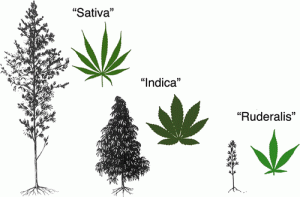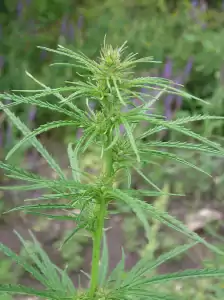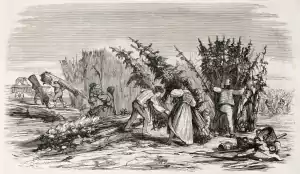English
The rich history of marijuana goes back several millennia. From the settlement of prehistoric hunters and gatherers in Central Asia, cannabis made its way to ancient China, Viking ships, Africa and eventually to the New World.
A distinction needs to be made between two types of cannabis. Cannabis is referred to as marijuana because of its psychoactive effects. Cannabis sativa L. (the L. was added as a tribute to a Swedish naturalist named Carl Linné, who is the author of the botanical and zoological nomenclature). A subspecies of the sown hemp is the cannabis ruderalis, lat. Cannabis ruderalis (hemp), which has a very low THC content, so it is not used as a drug. However, it has excellent properties for the production of oils, fuel or concrete. The second psychoactive cannabis species is Indica hemp, lat. Cannabis indica.
Where did cannabis come from
Cannabis plants are native to the steppes of Central Asia, specifically present-day Mongolia and southern Siberia. The history of the plant goes back more than 12 000 years, making it one of the longest cultivated crops. Read more in the book Marijuana: The First Twelve Thousand Years by Ernest Abel. Cannabis probably thrived in the area because of the nutrient-rich soil, Barney Luise Warf speculates. You can read his full article in the link below.
Archaeologists have found burnt marijuana seeds in Siberian kurgans (burial mounds) estimated to be 3,000 years old, as well as mummified psychoactive marijuana in the graves of noble men in Xinjiang province dating back to 2,500 BC.
The ancient Chinese used both technical cannabis and psychoactive marijuana. The earliest records of the medicinal use of cannabis date back to 4 000 BC. The herb was used as an anaesthetic during surgery and legends say that it was also used by the Chinese Emperor Shennong, the founder of herbal medicine and the ‘God of Chinese Medicine’, as early as 2 737 BC. However, the existence of this historical figure has not been historically documented and is considered mythical.
Marijuana arrived in Korea from China around 2000 BC. It arrived on the South Asian subcontinent sometime between 2 000 and 1 000 BC, when the region was facing an invasion by the Indo-Iranian Aryan tribes. In India, the herb was widely used as a remedy for anxiety and is even mentioned in a Vedic text.
From Asia to Europe
The arrival of cannabis in the Middle East between 2 000 and 1 400 BC is probably due to the Scythians, Indo-European nomads. They were also responsible for the spread of cannabis to what is now south-eastern Russia and Ukraine, as they occupied these territories for a long time. In pre-modern times, cannabis was used primarily for medicinal and spiritual purposes. For example, the Vikings and ancient Germans used it to relieve childbirth and toothaches.
Germanic tribes brought cannabis to what is now Germany and from there it reached the British Isles in the 5th century during the Anglo-Saxon Wars. Hemp seeds have also been found in Viking shipwrecks dating back to the mid-9th century. Over the next hundreds of years, hemp circulated around the world through Africa, then South America in the 19th century, before finally making its way to North America.
Marijuana is coming to the USA
After this long journey from the pre-modern and modern worlds, marijuana as a drug finally arrived in the United States in the early 20th century, brought by refugees from the Mexican Revolution of 1910-1911. Unfortunately, the article did not mention exactly when hemp arrived in the US as an industrial crop.
It was also at this time that the first prejudices against marijuana took root. US citizens associated marijuana with racist and xenophobic fears of Mexicans, whom they attributed with smoking, stealing, child abuse and murder.
American law has never made a difference hemp and industrial hemp, so the plant was first banned in Utah in 1915 and by 1931 in 29 states. In 1937, marijuana came under the jurisdiction of the Drug Enforcement Administration (DEA) and possession of the plant became illegal nationwide.
At the federal level, marijuana still retains its status as a Schedule 1 drug, along with, for example, heroin and LSD, indicating a high potential for abuse and dependence with no chance of therapeutic use. However, state laws are often not consistent with federal law.
This article is based on a study by a geographer named Barney Louis Warf, who is in the Department of Geography and Atmospheric Sciences at the University of Kansas in the USA. He works on economic, political and social geography. One of his publications is on the history of the spread of marijuana around the rest of the world.
Article source : softsecrets.com
Published by Kotelnik
20/06/2022choose and buy cannabis seeds from our offer
our pleasure
































